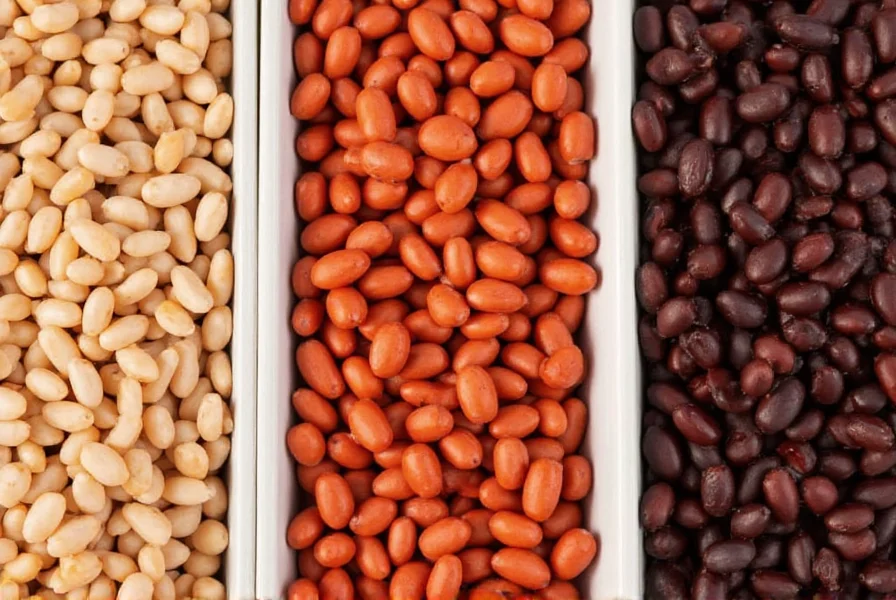Many home cooks search for “chili beans” expecting a unique bean variety, but this common misconception stems from menu descriptions and canned product labels. Understanding the actual beans used in chili preparation can transform your cooking results and nutritional intake.
Why the “Chili Bean” Misconception Exists
The confusion around “chili beans” primarily comes from two sources: restaurant menus listing “chili beans” as a dish component and canned goods labeled “chili beans” in grocery stores. These products contain standard bean varieties simmered in a tomato-based sauce with chili spices.
When exploring what is chili bean in culinary contexts, it's essential to recognize that authentic chili recipes from Texas to New Mexico traditionally use specific bean types that complement the dish's flavor profile and texture requirements.
Primary Beans Used in Authentic Chili Recipes
Three bean varieties dominate traditional chili preparations, each bringing distinct characteristics to the dish:

Kidney Beans (Phaseolus vulgaris)
The most recognizable chili ingredient, kidney beans maintain their shape during long cooking times. Their meaty texture and ability to absorb flavors make them ideal for hearty chili recipes. These beans provide 15g of protein and 13g of fiber per cooked cup.
Pinto Beans (Phaseolus vulgaris)
Popular in Southwestern and Mexican chili variations, pinto beans have a creamy texture when cooked and develop a speckled appearance that disappears when heated. They contain slightly more iron than kidney beans and create a thicker chili consistency.
Black Beans (Phaseolus vulgaris)
Common in modern and vegetarian chili recipes, black beans offer earthy notes and hold their shape well. They're nutritionally dense with high levels of antioxidants and provide a striking visual contrast in chili dishes.
| Bean Type | Protein (per cup) | Fiber (per cup) | Cooking Time | Best For |
|---|---|---|---|---|
| Kidney Beans | 15g | 13g | 45-60 minutes | Traditional meat chili |
| Pinto Beans | 15g | 12g | 40-50 minutes | Southwestern style chili |
| Black Beans | 15g | 15g | 50-60 minutes | Vegan/vegetarian chili |
Regional Variations in Bean Selection
Chili traditions vary significantly across regions, affecting beans used in chili recipes. Texas chili purists often omit beans entirely, focusing on meat and chili peppers. In contrast, Cincinnati chili features kidney beans in its distinctive Mediterranean-inspired preparation.
Understanding these regional differences helps when exploring chili bean vs kidney bean distinctions—in most contexts outside Texas, kidney beans are the default choice for chili preparations.
Preparing Beans for Superior Chili
Proper bean preparation significantly impacts your chili's texture and flavor. For dried beans, follow these steps:
- Sort and rinse beans to remove debris
- Soak overnight in cold water (or use quick-soak method)
- Cook separately until tender but not mushy
- Add to chili during the last 30-60 minutes of cooking
Canned beans offer convenience but require rinsing to remove excess sodium and the canning liquid that can affect flavor. When searching for how to cook beans for chili, remember that undercooked beans remain chalky while overcooked beans disintegrate, ruining the chili's texture.

Substituting Beans in Chili Recipes
When you need alternatives for traditional chili beans, consider these substitutions:
- Great Northern beans work well as a kidney bean substitute with milder flavor
- Cannellini beans provide creaminess similar to pinto beans
- Navy beans offer smaller size for quicker-cooking chili variations
For those exploring substitute for beans in chili, consider textured vegetable protein or diced mushrooms for vegetarian options, though these create a fundamentally different dish than traditional bean-based chili.
Nutritional Benefits of Beans in Chili
Beans transform chili from a meat-heavy dish into a nutritionally balanced meal. The chili bean nutrition facts reveal significant benefits:
- Fiber content aids digestion and creates lasting fullness
- Plant-based protein complements meat proteins for complete amino acid profile
- Low glycemic index helps maintain stable blood sugar
- Rich in folate, iron, and potassium
When comparing chili bean nutrition facts to meat-only chili, bean-inclusive versions typically have 30% fewer calories and 50% less saturated fat while providing additional vitamins and minerals.
Common Questions About Beans in Chili
Are chili beans and kidney beans the same thing?
No, chili beans aren't a specific variety. “Chili beans” refers to kidney beans (or other beans) prepared in chili sauce. Kidney beans are the most common bean used in chili recipes, which creates the confusion between these terms.
Can I make chili without beans?
Yes, traditional Texas chili recipes often omit beans entirely, focusing on meat and chili peppers. Many chili competitions follow this bean-free tradition. However, beans add nutritional value and texture that most home cooks prefer in everyday chili preparations.
How do I prevent beans from getting mushy in chili?
Add pre-cooked beans during the last 30-60 minutes of chili preparation. Never add raw dried beans directly to chili and avoid over-stirring once beans are incorporated. Cooking beans separately ensures they reach the perfect tenderness before joining the chili.
Which beans hold their shape best in chili?
Kidney beans maintain their shape better than most varieties due to their dense structure. Black beans also hold up well. Pinto beans become creamier during cooking, which some prefer for thicker chili consistency. For chunkier chili presentations, kidney beans are the optimal choice.
Do I need to soak beans before adding to chili?
For dried beans, soaking reduces cooking time and improves digestibility. If using canned beans, rinsing thoroughly replaces the soaking step. Never add unsoaked dried beans directly to chili—they won't cook properly in the acidic tomato environment and may remain hard.











 浙公网安备
33010002000092号
浙公网安备
33010002000092号 浙B2-20120091-4
浙B2-20120091-4